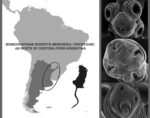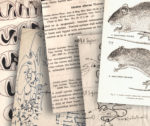Registros de varamientos de mamíferos marinos en la provincia de Buenos Aires, 2010–2022: implicancias para la gestión, conservación e investigación
Alan F. Rosenthal, Juan Pablo Seco Pon, Victoria González Carman, Pablo DenuncioEl monitoreo de mamíferos marinos a través del registro de varamientos es un método de bajo costo que permite conocer la diversidad de especies y tener una aproximación del tamaño de sus poblaciones. Si ese monitoreo se mantiene en el tiempo, resulta una valiosa herramienta para determinar y evaluar cambios en un ecosistema dado. En este estudio se presenta un análisis preliminar de los varamientos de mamíferos marinos registrados en playas de la provincia de Buenos Aires, Argentina, entre los años 2010 y 2022, con el objetivo de evaluar su diversidad específica en la región, abundancia, frecuencia y variaciones inter e intra-anuales. Los resultados demostraron que el ensamble de mamíferos marinos estuvo compuesto por 15 especies; de ellas, Arctocephalus australis, Pontoporia blainvillei y Otaria flavescens fueron las más importantes en orden descendente. De las especies halladas, 11 habitan ambientes tanto neríticos como oceánicos, mientras que el resto de las especies son exclusivamente neríticas u oceánicas. La mayor tasa de varamientos fue de 0,13 ejemplares/km en 2015, mientras que la menor fue de 0,04 en 2021 y 2022. Los análisis estadísticos realizados demostraron una fuerte influencia de las estaciones del año (variación intra-anual) en el número total de animales varados y en las dos especies más numerosas (A. australis y P. blainvillei). Ante el incremento de las actividades antropogénicas en la plataforma argentina adyacente (p. ej., exploración y explotación de hidrocarburos), este estudio constituye una importante línea de base que refleja la diversidad y tasa de varamientos de las especies de mamíferos marinos en las costas del norte de la Argentina.
Records of marine mammal strandings in the province of Buenos Aires, 2010–2022: implications for management, conservation and research. Marine mammal monitoring through stranding reports is a low-cost method that allows knowing species diversity and estimating population abundances. If stranding monitoring is constant through time, it becomes a valuable tool to determine and evaluate changes in ecosystems. In this study, we present a preliminary analysis of marine mammal strandings registered in beaches of the province of Buenos Aires, Argentina, during the period 2010–2022, with the goal of assessing its specific diversity in the region, abundance, frequency, and inter- and intra-annual variations. The results indicate that the marine mammal assemblage was composed of 15 species, with Arctocephalus australis, Pontoporia blainvillei, and Otaria flavescens being the most important in decreasing order. Of the species found, 11 inhabit both neritic and oceanic habitats, while the rest of the species are either neritic or oceanic exclusively. The highest stranding rate was 0.13 individuals/km in 2015, while the lowest rate was 0.04 in 2021 and 2022. The statistical analysis conducted showed a strong seasonality in stranding records (intra-annual variations) on the total number of stranding individuals and for the most conspicuous species (A. australis y P. blainvillei). Given the increase in anthropogenic activities on the adjacent Argentine continental shelf (e.g., oil exploration and exploitation), this study constitutes an important baseline that reflects the diversity and stranding rate of marine mammal species along the northern coast of Argentina.




